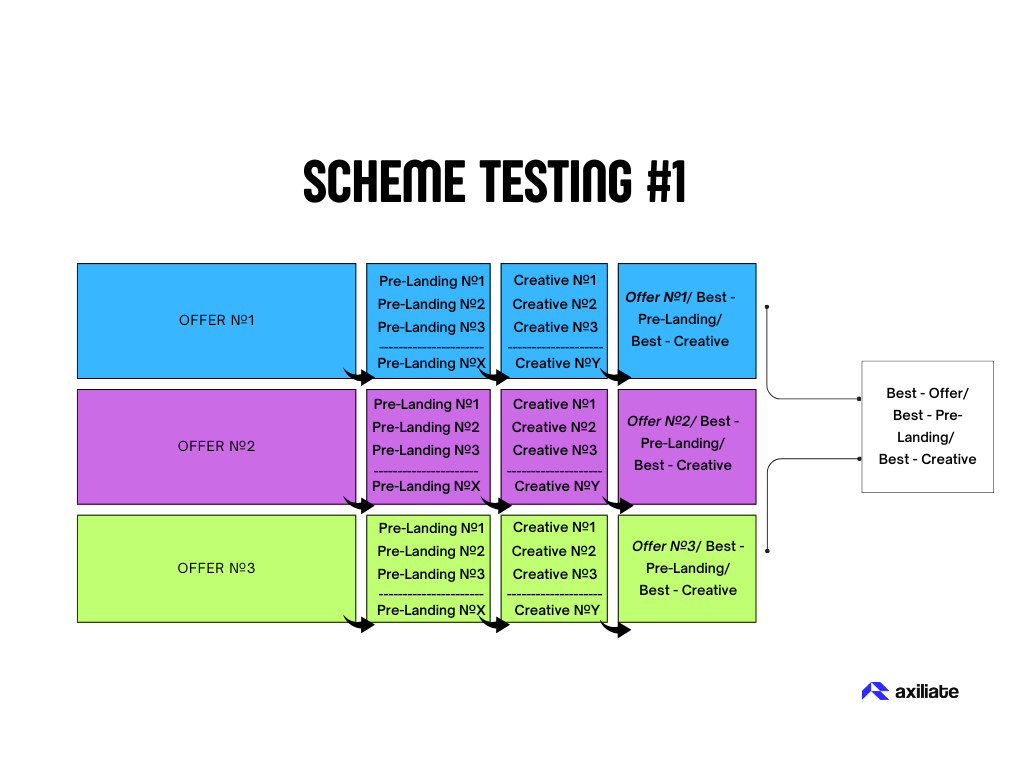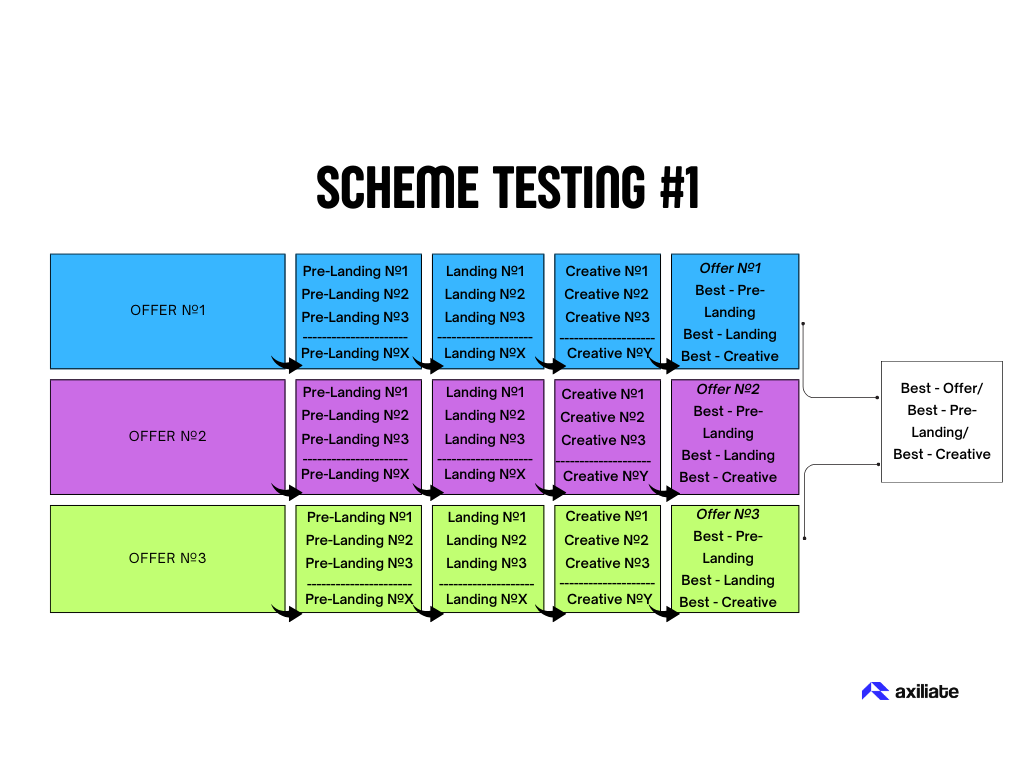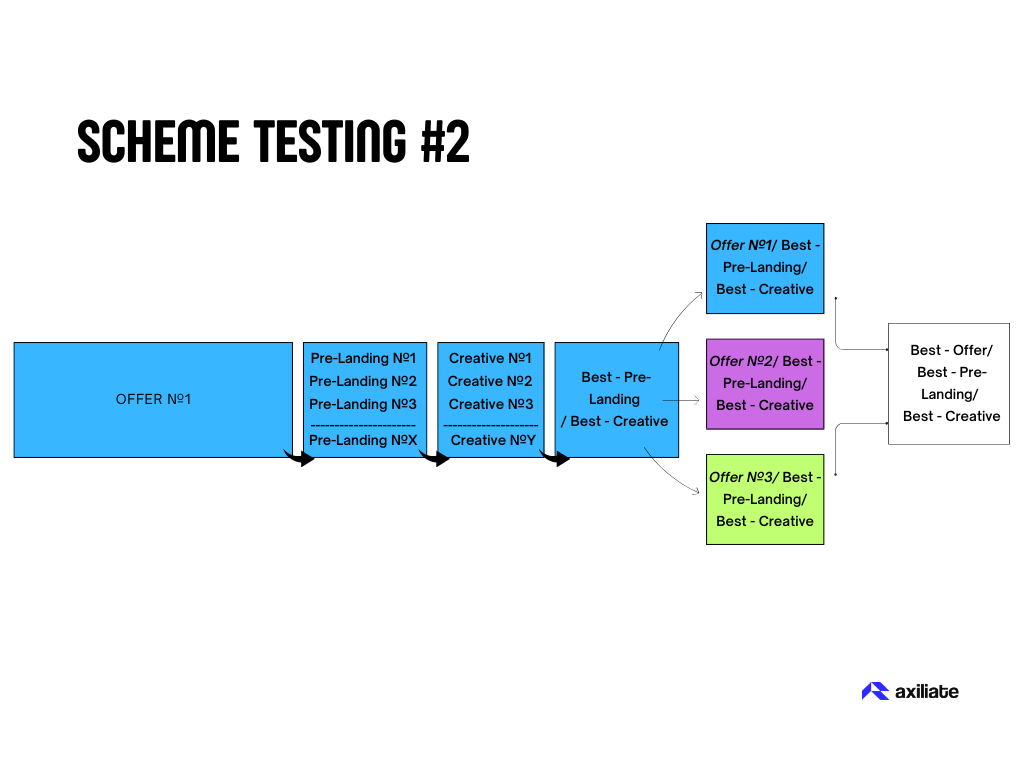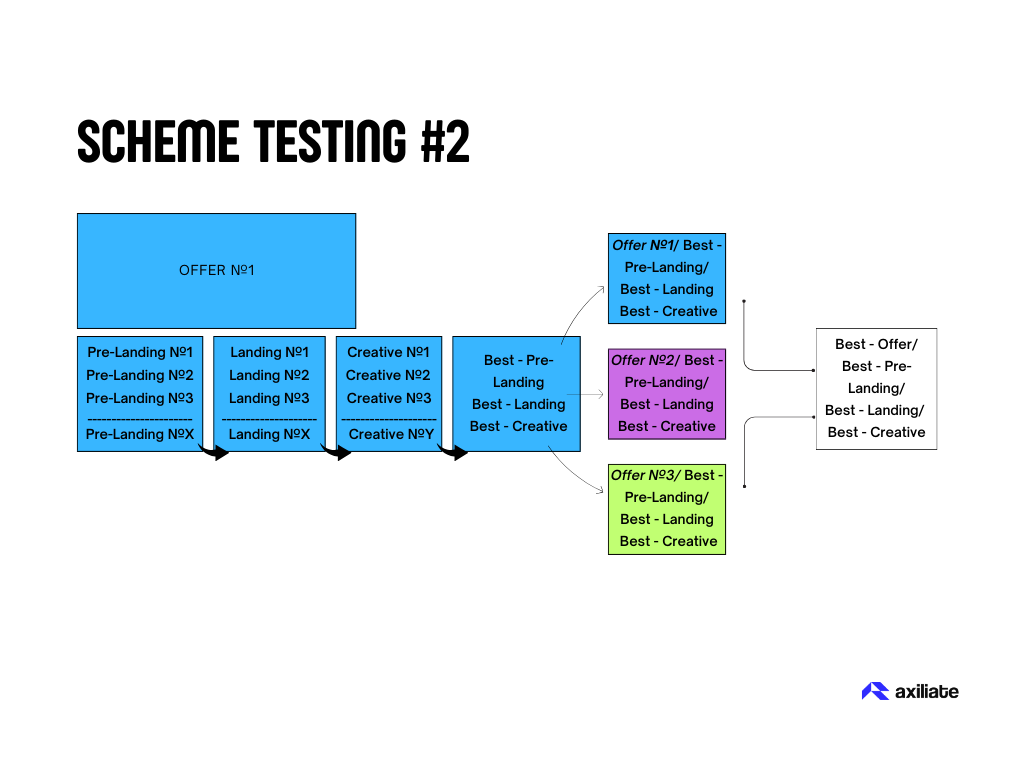Let’s look at two schemes for testing a combination of landing pages, offers and creatives, methods for calculating the minimum budget and key metrics for analyzing the results.
Testing scheme #1
With this scheme, all pre-landings with an order form are uploaded to the tracker or hosting for each offer. A certain number of creatives are created for testing. Advertising is launched for each offer and the best chain is selected: “Offer – Pre-Landing – Creative”. After that, the best combinations are launched and the best one is selected.
If the Pre-Landing + Landing scheme is used, then one more variable is added, but the principle remains the same.
Testing scheme #2
For the second scheme, the best combination of “Pre-Landing – Creative” is found first, and then Offers are added to this chain. After that, the best combination of “Offer – Pre-Landing – Creative” is found.
When using the Pre-Landing + Landing scheme, one more variable is added, but the principle remains the same.
Test budget
There are three main models to calculate the minimum budget that needs to be spent on a test.
• Model 1. 3 conversion costs are allocated for the advertising campaign. That is, if the conversion cost is 18, then for the test 18 * 3 = 54.
• Model 2. The model affects the number of Pre-Landing/Landing, the creatives used, and is calculated based on the EPL.
Budget = EPL * number of Pre-Landing/Landing * number of Creative
For example: offer payout is $20, average approval is 25%, the number of Pre-Landing/Landing is 4, and the number of Creative is 5. Then EPL = 20 * 0.25 = $5. The test budget is 5 * 4 * 5 = $100.
• Model 3. In this model, the budget is calculated based on the cost per click (CPC). On average, one Pre-Landing/Landing is directed to 150-200 clicks of traffic. If CPC = 0.05, then $7.5-$10 is spent on one landing.
Analysis of results
To analyze the results, you need to compare the main metrics, for Pre-Landing/Landing – this is CR (Conversion Rate). And for the general chain “Landing – Creative” – this is ROI (Return on Investment) and EPC (Earnings Per Click).
For ease of analysis, it is easier to build a report in the tracker. For this, standard UTM tags are transmitted. The report itself is built on the basis of such parameters as landing and Ad id, if a unique creative is loaded into each ad. For convenience, you can write the name of the creative in the ad name and then look at the Ad Name parameter.
At the output, you can get a report in which the combination of Pre-Landing – Creative will be clearly visible.
Leave a Reply